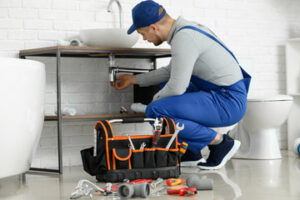Pests can damage your property and pose a health risk to you and your family. Look for a company with a tenured legacy. While newer companies may be just as good, experienced ones have refined their techniques over the years. Contact Coquitlam Pest Control now!
Monitoring and considering information about a pest’s biology helps determine whether it can be tolerated or if control measures are needed. IPM includes threshold-based decision-making: noticing a few flies doesn’t warrant action, but seeing more might.

Pest identification is one of the most important first steps in controlling any pest. Identifying the type of pest in your field or landscape will help you choose appropriate control strategies and avoid unnecessary risks to people and beneficial organisms. Pest identification requires becoming familiar with the pest’s life cycle and behavior, environmental factors that favor it, and procedures for preventing or controlling it.
Pests feed in a variety of ways and cause damage in a wide range of crops and plant materials. Some have chewing mouthparts that puncture or eat plant tissue. Others have sucking mouthparts that pierce or suck the juices out of leaves, fruit, or roots. Many pests are more active at a specific time of year or during certain stages of a plant’s growth. Consequently, different pests require different treatment strategies and methods of management.
Some pests carry diseases that can affect humans, animals, and plants. These pathogens can be spread through the pests’ fur, droppings, saliva, and feet and can cause illnesses that lead to serious or even life-threatening complications. In addition, the disease-carrying pests can contaminate surfaces and food and deteriorate or spoil crops.
Proper identification of pests will also help you decide whether a pest problem is significant enough to warrant action and the type of control measures that are needed. For example, some pests will only attack a crop for a short period and may not need to be controlled if their population is low. On the other hand, some pests will continue to multiply throughout a growing season and can significantly reduce yields and quality. In such situations, the use of pesticides to control the pests may be necessary.
Vertebrate (animal) pests can be difficult to identify, but they are often identified by examining tracks, gnawed wood, or muddy areas near the nest or feeding site. In addition, an online tool can assist you in narrowing down potential pests based on the physical features of the animal, its track marks, and scat. In some cases, a specimen may need to be sent to a laboratory for more precise identification.
Prevention
Pests can carry disease causing organisms that affect people’s health, cause property damage, or simply disrupt natural processes. Pest control aims to minimize the presence of pests and their impact. Pest management options include prevention, suppression and eradication. Prevention is an essential first step in controlling pests. This is accomplished by ensuring that the environment in which pests exist is unfriendly to them. This includes removing food, water, and shelter sources and eliminating conditions that promote their growth. In addition, observing and monitoring pest populations can help determine when action should be taken.
Physical controls are also important to prevent pests from invading buildings and structures. This includes sealing cracks and crevices to keep rodents out, removing trash and garbage regularly, and storing food in sealed containers. Practices like these, combined with implementing sanitation audits and cleaning routines, are the foundation of an effective pest control strategy.
Chemical pest control uses a variety of materials to kill or suppress unwanted insects, plants and weeds. These products may be in the form of baits, traps, vaporizers or sprays. These chemicals should be selected carefully and used sparingly, as they can be harmful to people, pets, and the environment if not used properly. Chemicals must be carefully formulated to target the specific pest while not harming other living organisms, and should always be used in accordance with their label instructions and warnings.
Biological pest control uses naturally occurring predators and parasites to reduce pest populations. This approach is also known as integrated pest management (IPM). Biological methods have been in use for centuries, with early records showing farmers using ants to control orange mites in ancient China. More recently, the reintroduction of natural enemies has been used in agricultural settings to maintain or improve crop yields by keeping pests below damaging levels.
Weather conditions can have an effect on both the prevalence of a pest and the level of damage it causes. For example, drought conditions can limit a pest’s access to food, while rainfall or freezing temperatures can suppress their population. In addition, some species of plants, animals and wood are resistant to certain pests. This resistance, when coupled with proper care and maintenance of those species, can help keep pest populations below damaging levels without the need for pesticides.
Suppression
Suppression methods limit pest activity and population growth by quickly reducing conditions that allow pests to thrive. They include physical destruction of pests or their eggs and larvae, and may also involve the use of biological controls such as parasitic nematodes or sterilisation programs. These measures are generally less disruptive to the environment than preventive and eradication techniques, but they may not be as effective in all situations.
Preventive control measures are economical and environmentally responsible ways to reduce or eliminate the conditions that promote pest infestations. They can include frequent cleaning of areas where a pest is known to occur, and storing food in sealed plastic or glass containers. Keeping the garbage in tightly closed and regularly removed containers also discourages pests from visiting, and fixing leaky pipes or making sure plants have adequate water can help keep them at bay.
There are many biological and cultural controls that can be used to limit the spread of some pests, including natural enemies that injure or consume them, and other organisms that suppress their populations. Weather and topography also influence pest populations directly, by limiting their range or making it harder for them to access resources. Chemicals may be used to kill or repel pests, but they should always be used as a last resort when other methods are not available or practical.
The best approach to pest control is prevention, which can be achieved through a combination of preventive and suppression methods. Scouting is important to identify and assess pest numbers and damage before taking action. It’s also important to consider what level of harm a pest might cause, and whether that is acceptable. If, for example, a pest only damages your crops or garden, it might not be worth the expense and risk of controlling it. On the other hand, a pest that could transmit disease or destroy your home might be unacceptably destructive and require control. This threshold-based decision-making relates back to step one, understanding the pest’s needs and habits. Then, you can decide what actions are needed to balance the pros and cons of control.
Eradication
Eradication is an objective that requires global cooperation between all nations. It aims to eradicate a disease completely, including its reservoirs (natural or human). The concept of eradication has been subject to considerable debate, with differing definitions used by different authors and organizations. An eradication conference held in Dahlem, Germany, in 1997 produced precise definitions for control, elimination and eradication from a biological, economic, and political perspective (Dowdle and Hopkins 1998). The eradication process is based on surveillance to identify and control transmission between individuals, as well as on environmental controls and certification that the infectious organism no longer exists anywhere on earth.
As a result of these factors, eradication can only be undertaken when the risk of reintroduction is small. Moreover, a cost benefit analysis must be carried out to demonstrate that eradication will improve social welfare and that it is financially beneficial compared to the best alternative of continuous control. This calculation must be based on projects of future infections and vaccination costs, their values, and discount rates.
During the eradication phase, the goal is to remove any threats from your environment in order of priority. For example, minor malware may be automatically removed by anti-malware tools, while more serious threats will require manual intervention. This includes removing affected systems and assets and reimaging them to ensure that any malicious code or files have been fully removed from the system.
Additionally, a thorough review of the incident response processes and procedures should be conducted to identify potential risks and gaps. During this stage, it is also important to assess the impact of eradication on business operations and communicate this to personnel so that they know what changes are in store for them.
Biological feasibility of an eradication program is dependent on a variety of factors, including the pathogen’s lifecycle, its reservoirs, persistence in the environment, clinical manifestations of infection, and sensitivity and specificity of diagnostic tests. It is also necessary to consider the impact of other pathogens that could take advantage of a niche vacated by an eradicable species (such as yellow fever and malaria). Logistic, operational, political, and financial considerations are equally crucial to implementing an eradication strategy.




